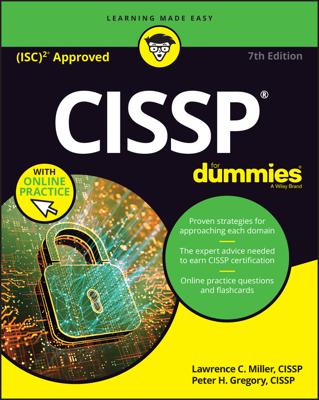Get a good night's rest
The night before the exam isn't the time to do any last-minute cramming. Studies have proven that a good night's rest is essential to doing well on an exam. Have a nice dinner (gofor some carbohydrates and avoid anything spicy), and then get to bed early. Save the all-night party for the day after the exam.Dress comfortably
You should dress in attire that's comfortable — remember, this is a six-hour exam. It's also a good idea to dress in layers — the exam room could be warmer or cooler than you're used to.Consider wearing loafers or other shoes that you can easily slip off (but please be considerate of others and wear clean socks!)
Eat a good breakfast
Mountain Dew and donuts: because breakfast is the most important meal of the day! Seriously, though, even if you're not a breakfast person, try to get something down before sitting for the CISSP exam. No extra time is allotted for lunch breaks, so plan on eating a good, healthy, hearty breakfast.Arrive early
Absolutely, under no circumstances, do you want to arrive late for this exam. Make sure that you know where the testing center is located, what the traffic is like at that time of the day, and where you can park. You may even want to do a dry run before the test day to be sure you know what delays you might encounter (particularly if you're not familiar with the area where the exam is being administered).Bring a photo ID
The testing center will verify your identity when you arrive for your exam. You need to bring your driver's license, government-issued ID, or passport — these are the only forms of ID that are accepted.Bring snacks and drinks
Check with your testing center regarding their rules about consuming snacks and drinks in the testing area. If they are permitted, bring a small bag that holds enough food and drink to get you through the exam. A big bottle of water is essential. Also, consider bringing a soda and some snacks, a sandwich, energy bars — whatever you like to snack on that replenishes and renews you without making you too thirsty.Bring prescription and over-the-counter medications
Again, check with your testing center and notify the test administrator if you're taking any prescription medication that must be taken during the exam (for example, one dose every four hours — remember, this is a six-hour exam!).Nothing can ruin your chances of succeeding on the CISSP exam like a medical emergency! Also, consider bringing some basic over-the-counter meds, such as acetaminophen, nasal spray, or antacids, to eliminate any annoying inconveniences such as headaches, heartburn, or a gastrointestinal malady. A box of tissues might also be appropriate — if you have a cold or you feel like crying when you see the exam!
Leave your electronic devices behind
This is the one day that your office and family members will have to do without you. Turn off your mobile phone and anything else that goes beep or buzz. Even better, leave it locked and hidden in your car or at home. If not, you might be required to surrender it at the test center — this is yet another good question to ask in advance.Take frequent breaks
Six hours is a long time. Be sure to get up and walk around during the exam. Take a short, five-minute break every hour during the exam. Eat a snack, go to the restroom, walk around, stretch, crack your knuckles, or whatever (breathe?) . . . and then get back to the task at hand. You might even incorporate breaks into your test-taking strategy. For example, answer 50 questions and then take a short break.Also, if you find your mind wandering or you have trouble focusing, take a break. Burnout and fatigue can lead to careless mistakes or indifference. If you feel these symptoms coming on, take a break.
But be careful not to overdo your breaks. Stick to frequent but short breaks, and you'll be fine.
Guess — as a last resort
Guessing is a desperate approach to test-taking, but it can be effective when all else fails. An unanswered question is definitely wrong, so don't leave any questions unanswered. If you must guess, try to eliminate as many obviously wrong answers as possible. If you can eliminate two possible choices, you have a 50/50 chance of getting the answer right. Another strategy for guessing is to count up the total number of A, B, C, and D answers you've already identified. Most (although not all) multiple-choice tests should have a fairly even distribution of answers.When all else fails, go with your gut feeling! Research has shown time and again that your first guess is often correct. So unless you find that you misread a question — for example you missed a key word like "NOT" or "ALL" in the question — avoid the temptation to change an answer without a compelling reason.

